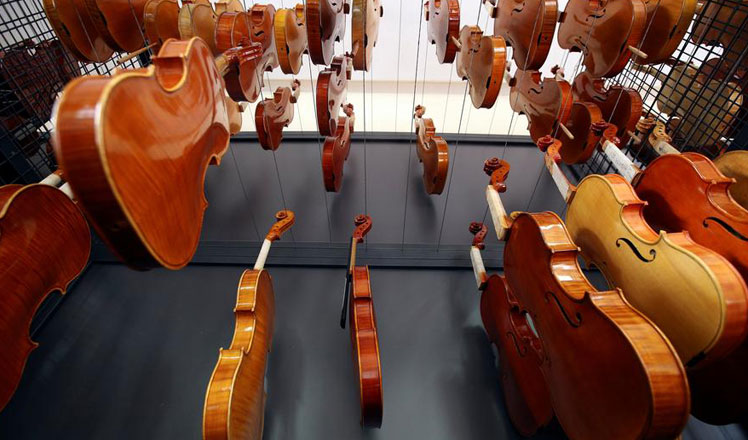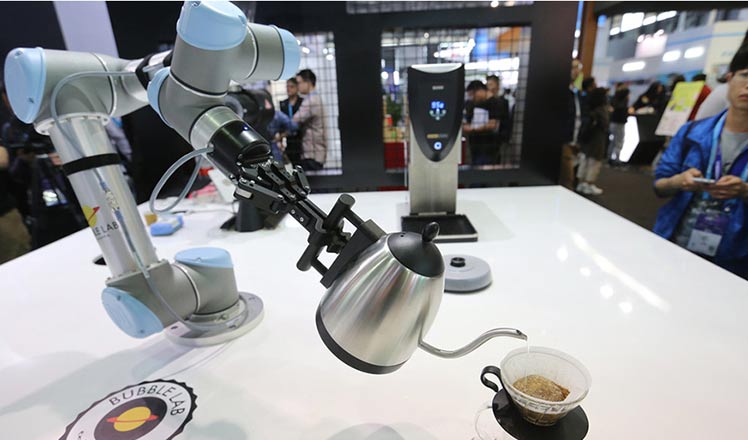Wine market shrugs off slump as consumers raise their glasses
Updated: 2016-05-16 08:19
By WU YIYAO(China Daily)
|
||||||||
 |
|
A woman takes a close look at two imported wines during a wine-tasting event in Ningbo, Zhejiang province.CHINA DAILY |
To be sure, made-in-China wines are also visible in the market. Their price points and product portfolios are regularly adjusted to stay competitive in a market that is marked by a growing affinity for imported wines.
According to a research note from Winechina.cn, a website that focuses on the wine market in the country, wines produced in China account for some 70 percent of the national market now.
Some new Chinese labels, such as Grace Vineyard from the NingxiaHui autonomous region, are gaining in popularity among wine lovers in China, and are even exported.
But it is the established wine brands such as Chang Yu and Great Wall that still dominate the China market. They are performing better in lower-tier cities where the distribution system and consumer groups are less impacted by imports than in first-tier cities and coastal cities, the Winechina.cn report said.
Zhou Hongjiang, general manger of Chang Yu, said China's wine market is not a zero-sum game between imported wines and local brands. As the market expands, all players that offer high-quality products can hope to attract more buyers.
Zhu Qi, 46, a wine collector in Shanghai, said, "This (coming of age of the wine market in China) is actually very good for wine consumers like me because tasting wines is like touring a place. It involves a lot of senses, memories and imaginations. In the past, when wine varieties and sources were limited, I felt like a person who could not travel far. Now with more choices, I feel like touring around the globe."
Consumers like him, he said, expect a more transparent and consistent pricing system.
"One thing confuses me, and that is the price. In China, the same bottle of wine at various retailers may vary greatly, from 100 yuan to 380 yuan. Perhaps, it's because retailers' capacity to manage costs varies. It's also likely that the market is still not mature enough and quite segmented," said Zhu.

 Wine market shrugs off slump as consumers raise their glasses
Wine market shrugs off slump as consumers raise their glasses
 The world in photos: May 9-May 15
The world in photos: May 9-May 15
 Terracotta teddy bears debut in Wuxi
Terracotta teddy bears debut in Wuxi
 Karst wonderland in Southwest China
Karst wonderland in Southwest China
 Love on the rubble: wedding stories after deadly quake eight years ago
Love on the rubble: wedding stories after deadly quake eight years ago
 Italy's violin-makers struggle to hit profitable note
Italy's violin-makers struggle to hit profitable note
 High-tech gadgets shine at CES Asia in Shanghai
High-tech gadgets shine at CES Asia in Shanghai
 Cannes Film Festival opens amid terror threat
Cannes Film Festival opens amid terror threat
Most Viewed
Editor's Picks

|

|

|

|

|

|
Today's Top News
Liang avoids jail in shooting death
China's finance minister addresses ratings downgrade
Duke alumni visit Chinese Embassy
Marriott unlikely to top Anbang offer for Starwood: Observers
Chinese biopharma debuts on Nasdaq
What ends Jeb Bush's White House hopes
Investigation for Nicolas's campaign
Will US-ASEAN meeting be good for region?
US Weekly

|

|







